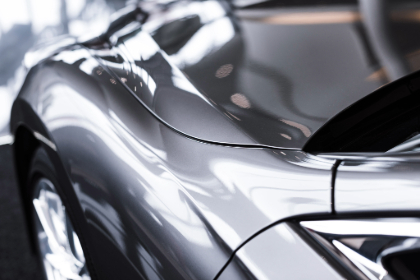INDEPENDENT DEALER
Fairfield Township, OH | (513) 348-0758
OUR BLOG
Car waxing to keep a shiny vehicle isn’t just a matter of looks. It affects its performance, lifespan, the environment, and your wallet. To do it on your own, this post by Esyntheticmotoroil in Fairfield Township, OH will give you the best car waxing tips.

Waxing your car is one of the best ways to maintain its appearance, protect the paint, and keep it looking new. A good wax creates a protective layer against UV rays, dirt, and contaminants, all while giving your car a sleek, shiny finish. Here are some essential car waxing tips to help you achieve a professional-looking wax job that will keep your vehicle in top shape.
Call Esyntheticmotoroil in Fairfield Township, OH at (513) 348-0758 or visit AMSOIL’s online store to keep your vehicle in mint shape inside and out.
The Best Car Waxing Tips
1. Choose the Right Type of Wax
Car waxes come in different types, including natural carnauba wax, synthetic waxes, and spray waxes. Carnauba wax provides a deep, warm shine and is ideal if you’re after a classic look, but it tends to wear off faster. Synthetic waxes, on the other hand, are made to last longer and are more durable, providing excellent protection in harsher weather conditions. Spray waxes are convenient and easy to apply for a quick shine but generally don’t last as long as paste or liquid wax.
Consider your needs, the weather in your area, and how much time you want to spend on waxing to choose the best option.
2. Prep Your Car Before Waxing
A successful waxing starts with proper preparation. Before applying any wax, wash your car thoroughly to remove dirt, grime, and old wax. Skipping this step can lead to streaks and scratches, as dirt particles might get trapped under the new layer of wax.
For best results, follow up with a clay bar treatment, which removes deep-seated contaminants from the paint surface and leaves it completely smooth. The cleaner and smoother the paint, the better the wax will adhere, giving a longer-lasting shine.
3. Work in the Shade
Waxing in direct sunlight can cause the wax to dry too quickly, making it harder to apply evenly and leaving streaks or blotches on the paint. Ideally, wax your car in a shaded area or on a cool, cloudy day. Working in the shade ensures that the wax goes on smoothly and evenly, giving you more time to buff it to a shine without worrying about rapid drying.
4. Apply Wax in Small, Circular Motions
Using a microfiber or foam applicator pad, apply the wax in small, circular motions to ensure an even coating. Begin with a thin layer; too much wax can be difficult to buff and may leave residue. Work one section of the car at a time, such as the hood, roof, or each door, instead of trying to wax the entire car at once. Applying the wax in small sections allows you to focus on getting an even finish and makes it easier to buff each section to a shine.
Keep your engine shiny and working strongly with AMSOIL's Signature Series 0W-20 Synthetic Motor Oil, the best synthetic oil in Fairfield Township, OH.
5. Let the Wax Dry Properly
After applying the wax, let it sit for a few minutes until it begins to haze, indicating it’s ready to be buffed. Check the instructions on your specific wax, as drying times can vary. Rushing this step might leave smudges or streaks. The hazy texture will let you know the wax has bonded to the paint, making it easier to buff to a mirror-like shine.
6. Buff with a Clean Microfiber Towel
Once the wax has dried to a haze, use a clean, soft microfiber towel to buff the surface in circular motions. A microfiber towel will pick up the dried wax effectively without scratching the paint. As you buff, you’ll start to see the gloss and depth of color that the wax provides. If you see any streaks or residue, flip the towel to a clean side and continue buffing until the surface is uniformly shiny.
7. Repeat as Needed
For optimal protection, you may want to apply two coats of wax, especially if you’re using carnauba wax. The second coat should go on lightly and only after the first layer has been fully buffed. Adding multiple layers provides added durability and a richer shine. However, avoid over-waxing, as too many layers can lead to buildup that’s difficult to remove.